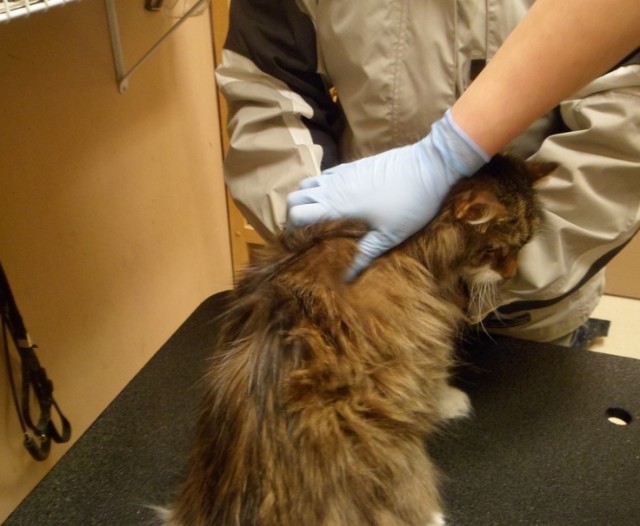Getting a Microchip is a Must
By Nomi Berger
Millions of dogs and cats go missing each year. Unfortunately, very few of them are ever reunited with their owners. Many of them become and remain strays. Others are taken to pounds or shelters, where they are either adopted out to new homes or, all too often, euthanized. Now protective pet parents, no longer content with relying on collars and tags alone, have begun microchipping their pets.
It’s a simple and safe procedure. A microchip designed especially for animals — the size of a grain of rice — will be injected beneath the surface of a dog’s skin between the shoulder blades. Similar to a routine shot, it takes only a few seconds and most pets don’t even seem to feel the implantation. Unlike other forms of identification, a microchip is permanent and, with no internal energy source, will last the life of the dog or cat. Once it’s implanted, the pet must immediately be registered with the microchip company (usually for a one-time fee), thus storing his unique, alpha-numeric code in the company’s database.
Whenever a lost pet appears at a shelter, humane society or veterinary clinic, he/she will automatically be scanned for a microchip. If there is one, the screen of the handheld scanner will display that dog or cat’s specific code. A simple call to the recovery database using a toll free 800 number enables the code to be traced back to the owner. But in order for the system to work efficiently, all owners are cautioned to keep their contact information up-to-date.
The most complete microchips comply with International Standards Organization (ISO) Standards. These standards define the structure of the microchip’s information content and determine the protocol for scanner-microchip communication. They also include the assignment of a 15-digit numeric identification code to each microchip; 3 digits either for the code of the country in which the dog was implanted or for the manufacturer’s code; one digit for the dog’s category (optional), and the remaining 8 or 9 digits for that pet’s unique ID number.
As with anything else, however, problems can and do arise. Not all shelters, humane societies, and veterinary offices have scanners. Although rare, microchips can fail, and even universal scanners may not be able to detect every microchip. Accurate detection can also be hampered if dogs struggle too much while being scanned or if either long, matted hair or excess fat deposits cover the implantation site. And because there are an ever-increasing number of pet recovery services, there is, as yet, no single database that links one to the other.
Since no method of identification is perfect, the best way owners can protect their pets is by being responsible owners: keep current identification tags on any pets who go outside regularly, never allow them to roam free without your supervision, and microchip them for added protection.
All of the pets at TAGS are microchipped as soon as they enter our program. Once adopted, the new owners are encouraged to update their information as soon as possible.
BONUS CONTENT:
Read what happened when two TAGS volunteers came
upon a seemingly-abandoned Beagle last winter.
***THE NEXT TAGS MICROCHIP CLINIC IS SATURDAY,
OCTOBER 4 AT PET VALU PICKERING. ***
Call the store directly to book your spot and protect your pet for $30.




I definitely agree that pet owners should keep the contract information up-to-date. My neighbor lost her dog last week. No one has come across it yet. I hope that someone will find her quickly and either bring her back or take her to the vet.
http://www.applevalleyanimalhospital.com/